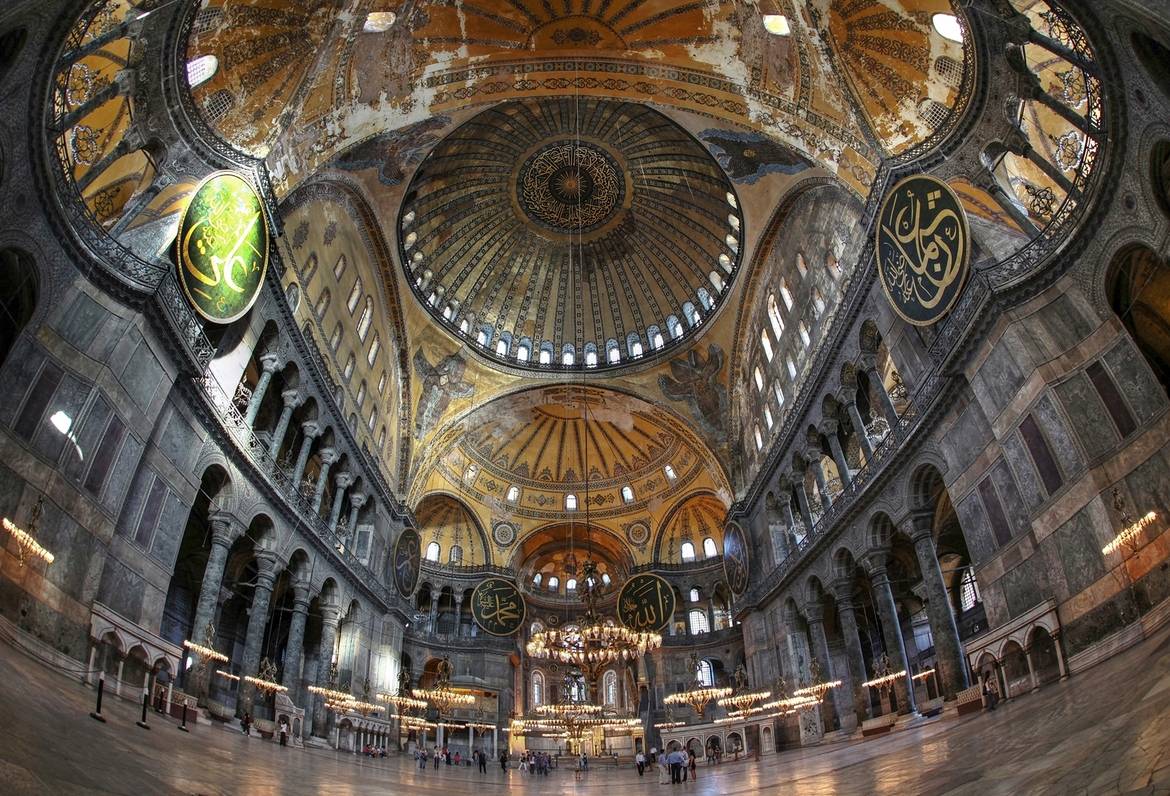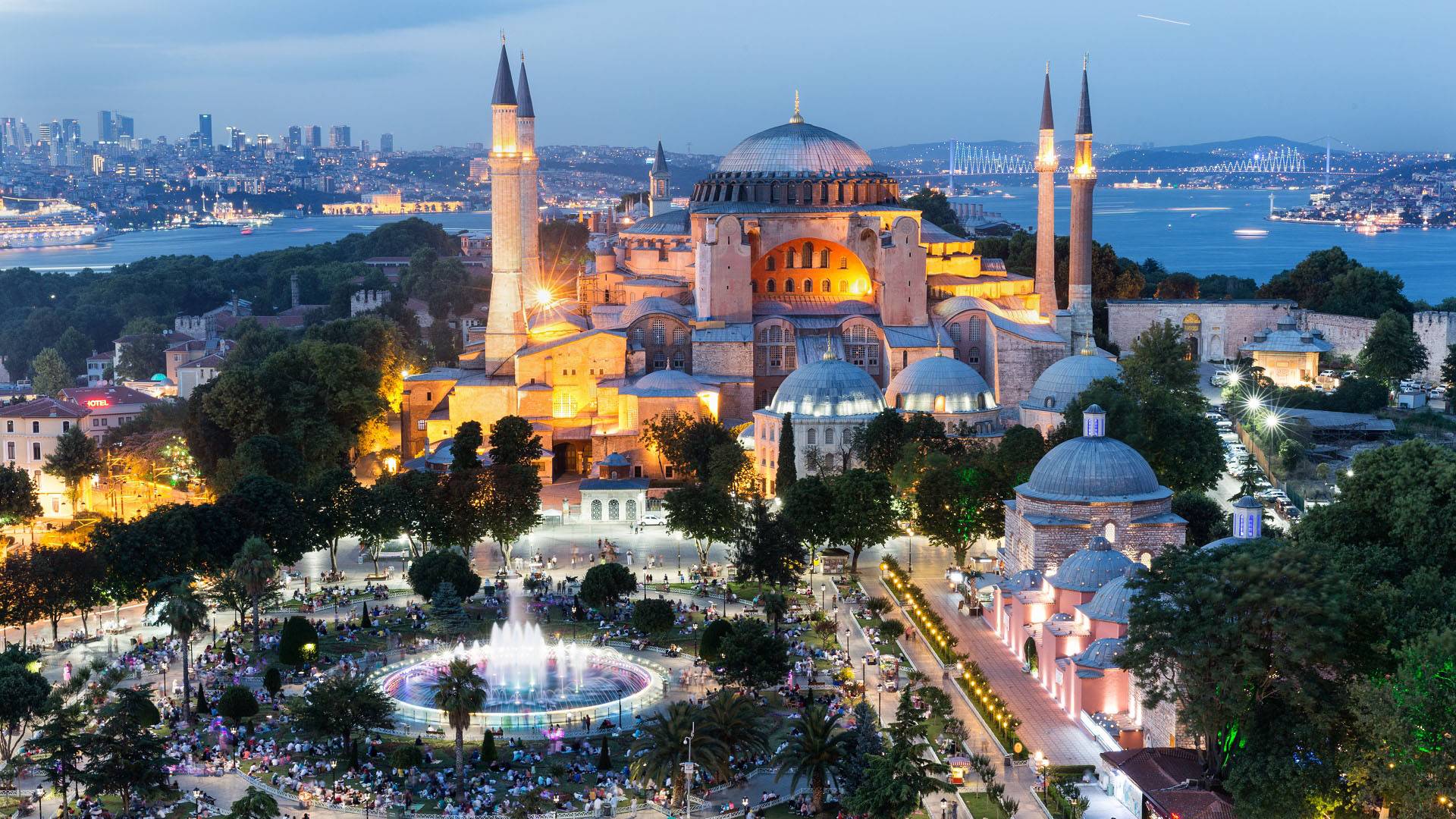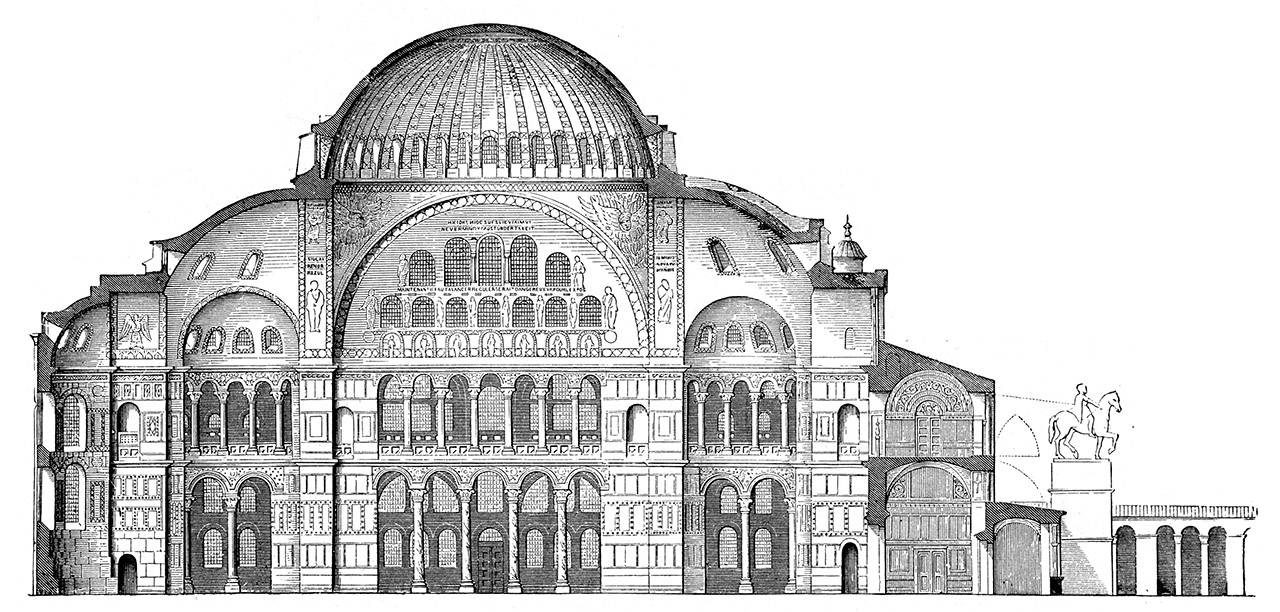🇹🇷 Hagia Sophia
The Hagia Sophia at the Bosporus is one of the most amazing buildings between the Orient and Occident.
The Hagia Sophia (the Greek Ἁγία Σοφία 'holy wisdom', Turkish Ayasofya) or Sophia church is a former Byzantine church, which later became a mosque and is now used as a museum (Ayasofya Camii Müzesi, 'Hagia Sophia Mosque Museum'), It is located in Eminönü, a district in the European part of Istanbul.
After the burning of two precursor buildings, Emperor Justinian, with the construction of a dome basilica in the 6th century AD, pursued a particularly ambitious building-political program. It is not only the last of the late great churches that have been erected since the time of Constantine the Great in the Roman Empire, but is often regarded as a church without precedent and without imitation in its architectural uniqueness.
The dome of the Hagia Sophia remains the largest dome of architectural history ever built with only four supporting points, and has a 32-meter span, and is considered to be one of the most important buildings of all times, with the gigantic realization and its special harmony and proportions.
As the last great and by far the most important building of early Byzantine architecture and art of late antiquity, it at the same time produced a new paradigm of church architecture which was partly in contrast to its older forerunners and was to form one of the fundamental pillars of Christian architecture in East and West.
The Hagia Sophia was the cathedral of Constantinople, the main church of the Byzantine Empire and the religious center of orthodoxy, and is now a landmark of Istanbul.
Scarcely one month after the destruction, on 23 February 532, Johannes Zonaras began the construction of a new, more powerful church, whose form Justinian was revealed in the dream. He wanted to build a church 'as it had not existed since Adam's time, and as it would never exist again.' In addition, he wanted to surpass the polyeuct church built by Anicia Juliana. This was built around 520 as a replica of the Solomonian temple and was generally admired. This seems to have aroused the ambition of Justinian, and he should have invested 360 pounds of gold in the new building. According to a report by the journal 'Nature', it was 145 tons of gold.
On 27th December 537 the shell was inaugurated. According to the legend, the Emperor could not master the inauguration of his excitement. He was to go with his triumphal car, thanked God and (in reference to the temple in Jerusalem, which was still regarded as the yardstick for Christian sacred buildings, as well as presumably under reference to the polyhedral church):
'Glory and honor to the Most High, who thought me worthy to complete such a work. Solomon, I have surpassed thee.'
This content cannot be displayed because cookies are disabled.
Change settings here.
Constantinople fell to the attacking Ottoman forces on the 29th of May in 1453. In accordance with the traditional custom at the time, Sultan Mehmet II allowed his troops and his entourage three full days of unbridled pillage and looting in the city shortly after it was captured. Once the three days passed, he would then claim its remaining contents for himself.
Hagia Sophia was not exempted from the pillage and looting and specifically became its focal point as the invaders believed it to contain the greatest treasures and valuables of the city. Shortly after Constantinople's defenses collapsed and the Ottoman troops entered the city victoriously, the pillagers and looters made their way to the Hagia Sophia and battered down its doors before storming in.
All throughout the period of the siege of Constantinople, the trapped worshipers of the city participated in the Divine Liturgy and Prayer of the Hours at the Hagia Sophia and the church formed a safe-haven and a refuge for many of those who were unable to contribute to the city's defense, which comprised women, children, the elderly and the sick and the wounded.
Being hopelessly trapped in the church, the many congregants and yet more refugees inside became spoils-of-war to be divided amongst the triumphant invaders. The building was significantly desecrated and looted to a large extent, with the helpless occupants who sought shelter within the church being either enslaved, physically and sexually violated or simply slaughtered.
While most of the elderly and the infirm/wounded and sick were killed, a vast number of women and girls were raped and the remainder (mainly teenage males and young boys) were chained up and sold off into slavery.
The church's priests and religious personnel continued to perform Christian rites, prayers and ceremonies until finally being forced to stop by the invaders. When Sultan Mehmet II and his accompanying entourage entered the church, he insisted that it should be converted into a mosque at once. One of the ulama present then climbed up the church's pulpit and recited out the Shahada, thus marking the beginning of the gradual conversion of the church into a mosque.

Source: Wikipedia

